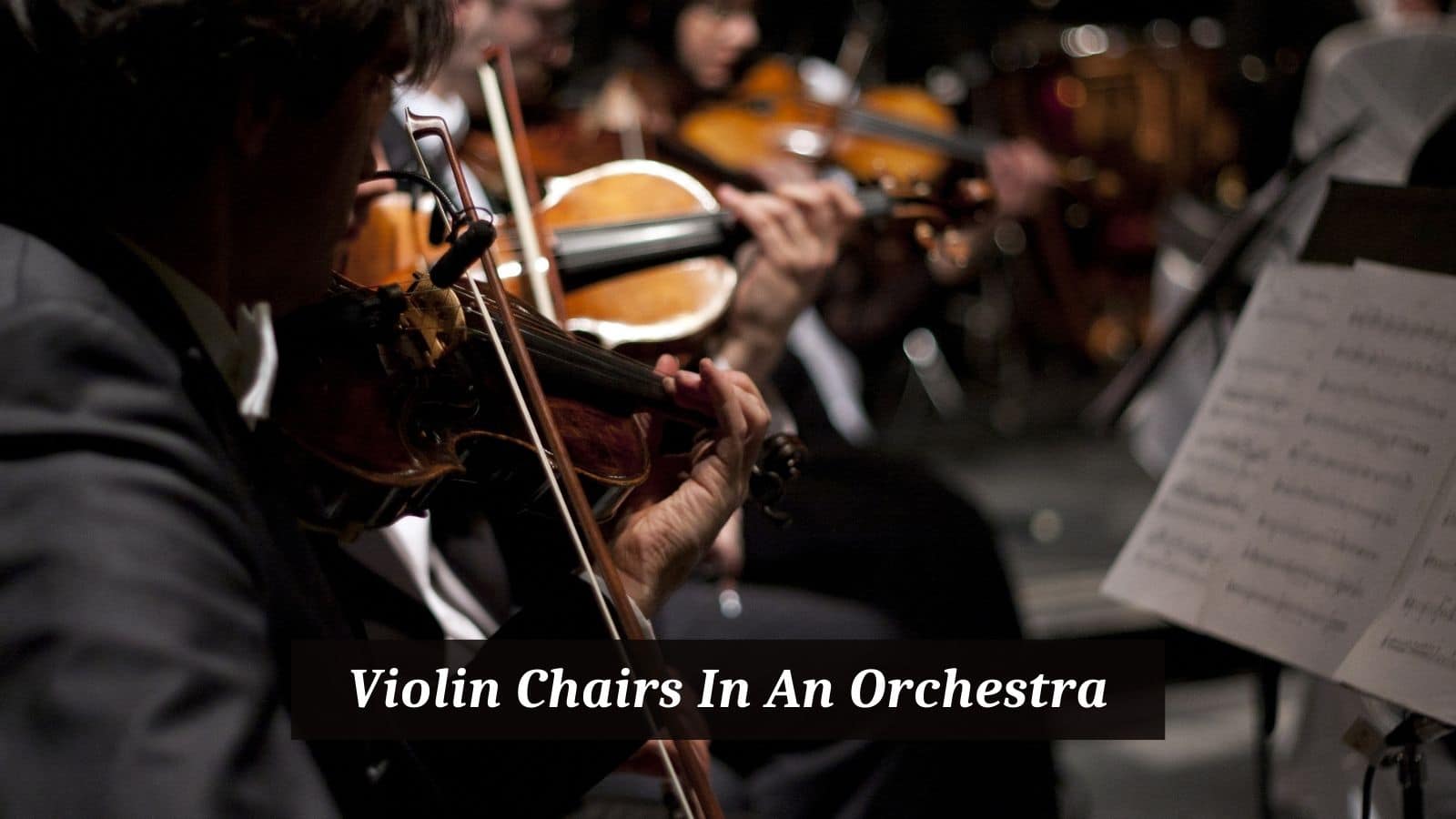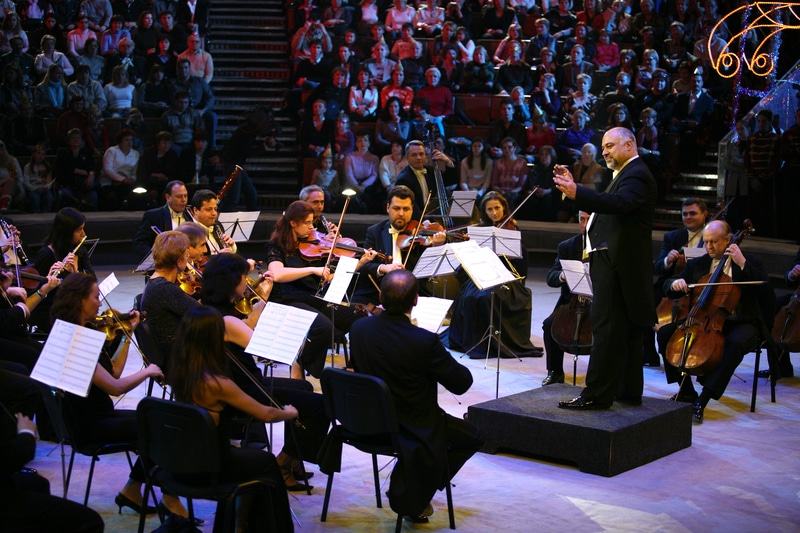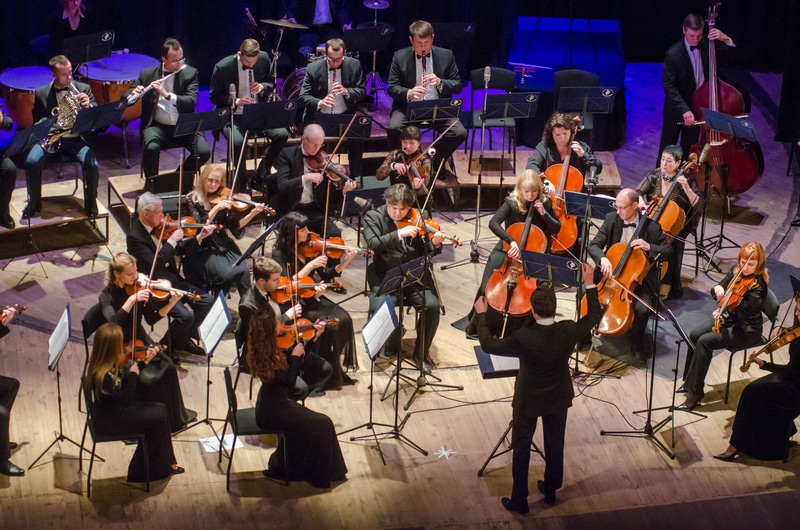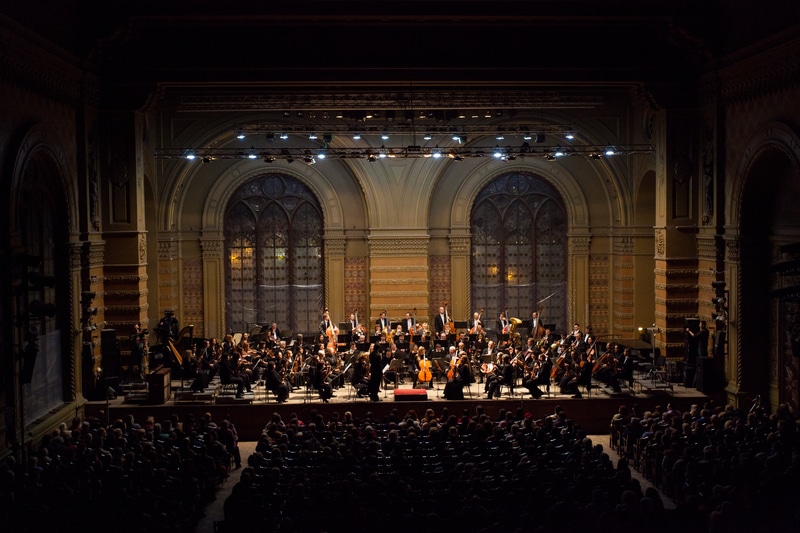
When we think of an orchestra, we immediately think of a large number of violinists sitting in front of the stage, in an almost privileged place near the conductor, just like the cellos and violas.
The winds are placed far back, near the percussion section. This is a standard layout that was established some centuries ago, and although there are some variants, in modern orchestras the violins are always placed on the left side (from the audience’s point of view).
There is also always one leader in the violin section who can command the whole group under the supervision of the conductor. But why do orchestral musicians still keep this setting today?
Violin Chairs In An Orchestra
The orchestra, as we know it, has its roots in ancient Greece, where plays and dramas were very much appreciated and performed in local theaters throughout the country.
Although real orchestras did not exist at that time, it was common practice to have a chorus and some musicians take part in the plays.
It was not until the revival of the Ancient Greek culture during the Renaissance, a historical period comprehended between the fourteenth and sixteenth centuries, that the an ensemble with specific parts to be played by each instrument took its initial form, though serving as the accompaniment for operatic works.
However, during the Baroque period, the orchestra became an independent group. Stringed instruments like the violin were fundamental in the orchestra, capable of imitating the human voice and dialoguing with the singers.
Placement of the violins
With the growth of the orchestra, the preference to place the violins near the front reflected their acoustic properties: violins cannot be as loud as most wind instruments, especially those that belong to the brass section.
Increasing the number of violins that play the exact same part and bringing them to the front helped them project their sound better. This pattern has been followed until nowadays.
However, because of their pitch range, violins were often divided into two main groups: violins I and violins II (or first and second violins).
The first group being usually responsible for playing the melodies and reaching the higher pitched notes, and the second group providing some kind of harmonic support or dubbing the first violins.
Throughout the history of the orchestra, violins I and II were usually placed facing each other, one on each side of the orchestra. It was not until modern times that the violins started to be placed next to each other as one big group.
This innovation is normally attributed to the composer Stokowski, who liked to experiment with orchestral seatings.
In the 1920s, when working with the Philadelphia Orchestra, he decided to place the high-pitched instruments on the left side and the lower-pitched instruments on the right side of the stage.
This change was adopted throughout the United States and soon reached all the orchestras around the world.
Concertmaster
The concertmaster is the leader of the strings section. He sits very near the conductor, in the outside seat, near the audience. Among his duties, he must ensure that all the string players are moving their bows in a very synchronized way, keeping the sound homogeneous.
He is supervised by the conductor, who can ask for some quick technical adjustments so that the music can sound better. Another important role of the concertmaster is to play the solos written specifically for him.
Next to the concertmaster there is always an assistant, who should replace the concertmaster whenever needed, and that is why this position is called assistant concertmaster.
The leader of the second violins
The group of the second violins also has its own leader, who interacts directly with the concertmaster. This leader sits in the first row, very near the concertmaster.
His roles include passing the indications given by the concertmaster to the whole section and assisting the concertmaster whenever needed. There are also some solos that are assigned to the player who assumes this position.
The seating
All the string players share music stands—one stand for every two musicians—where they read from the same sheet music. They are placed in a line, so we can expect to see one line of first violins and one line of second violins.
Additional lines can be required to fill the gaps inside the orchestra, allowing a large group to stay as close as possible.
The chamber orchestra
Nowadays, there are two main types of orchestras in which the violins are included: the symphony orchestra and the chamber orchestra. The latter is smaller and usually composed of string players only.
Many composers have written for this type of ensemble since the Baroque period, and nowadays there are ensembles that specialize in performing works of the Baroque period.
Not only do they try to recreate the music style but also the whole atmosphere of the Baroque period. Other modern chamber orchestras usually perform a number of contemporary works. In both cases, it is not rare to see the violinists and violists standing rather than sitting in chairs.
The symphony orchestra
The standard modern orchestra has approximately 32 violinists, divided into two groups of 16 musicians each.
However, due to the high costs of maintaining such a large orchestra, it is not rare to find orchestras that play with a reduced number of violins and string players in general.
The ideal size reflects the ideal acoustics, which require a large number of string players to counterbalance the powerful sonorities of the wind and percussion sections.
Final words
The violin always played a very important role in the orchestra, and defining the best positions for the violinists was essential for synchronizing the group and providing the audience with the best acoustic experience.
In modern times, we can see some groups experimenting with new settings, breaking old standards, but the traditional placement of the first violins on the left side can hardly be changed since the players need to project the melody towards the audience.
If the first violins were placed on the right side, their sound would project towards the back of the hall, which would be the least desirable option for the audience.



